When it comes to making money with video content, YouTube probably comes to mind first. But is it the best choice? With the risk of demonetization, lack of flexibility, and limited monetization options, it may not be – especially if you don’t already have millions of followers. But what other options are out there?
We’ll go over six alternatives to monetizing your content on YouTube, including social platforms that don’t have the same drawbacks and streaming platforms that give you more control over how you make money.
Before we get into the alternatives, though, let’s make sure we understand how YouTube monetization works.
Understanding YouTube’s monetization options
While having a strong YouTube following can lead to multiple monetization opportunities, the main revenue source for most creators is ads. YouTube pays creators for each ad view, though the amount paid varies and isn’t always clear.
According to HootSuite, most sources agree that the average YouTuber in the U.S. earns 1¢ to 3¢ per ad view on their channel, which translates to $10 to $30 per 1,000 ad views. That doesn’t apply to everyone, but it’s a good guess for the average YouTube creator.
However, that number can vary based on many factors, including your location, the industry/niche of your videos, ad formats, competition between advertisers, whether you publish Shorts or full-length videos, different modules you’ve enabled (which you can view in your YouTube Studio agreements), and more.
You’ve probably seen the big creators who are making millions on their ad views. Remember that success stories like these are few and far between . . . and those creators work at it full-time, most likely with full teams of marketers and producers.
But that doesn’t mean you couldn’t pull in a respectable amount of revenue by putting in the work and being smart about it. And that may include choosing an alternative to YouTube monetization that better fits your needs and goals.
Channel memberships
In addition to ad revenue, creators can offer YouTube channel memberships that give members access to badges, emoji, and exclusive content.
You’ll need to meet some basic requirements before offering channel memberships, including
- having over 1,000 subscribers,
- having 4,000 valid public watch hours in the last 12 months or 10 million valid Shorts views in the last 90 days,
- living in one of the available countries, and
- not having your channel set as “made for kids.”
If you meet these and a few other requirements, you can start offering memberships to your channel. It’s worth noting, however, that YouTube takes 30% of the revenue from your memberships.
Demonetization issues
Even if you do generate millions of views and offer popular memberships, there’s another factor to be aware of: YouTube demonetization.
In short, if YouTube decides that your channel isn’t suitable for ads, you can be “demonetized,” which means that you no longer earn ad revenue. It can happen overnight and with no warning. And while you can survive YouTube demonetization, having hundreds, thousands, or even hundreds of thousands of dollars in ad revenue immediately reduced to almost nothing is a scary experience.
The point is that even with effective monetization on YouTube, it’s still only partially under your control. If you want total control over your monetization, you’ll need to look elsewhere.
6 YouTube monetization alternatives
So what are your options for making money beyond YouTube? There are plenty of other places where online creators can find revenue. We’ve put together six options, and we’ll compare their advantages and disadvantages.
Keep in mind that these can be alternatives or supplements to YouTube. You don’t have to abandon the progress you’ve made if you’ve already started building a following on YouTube.
Twitch
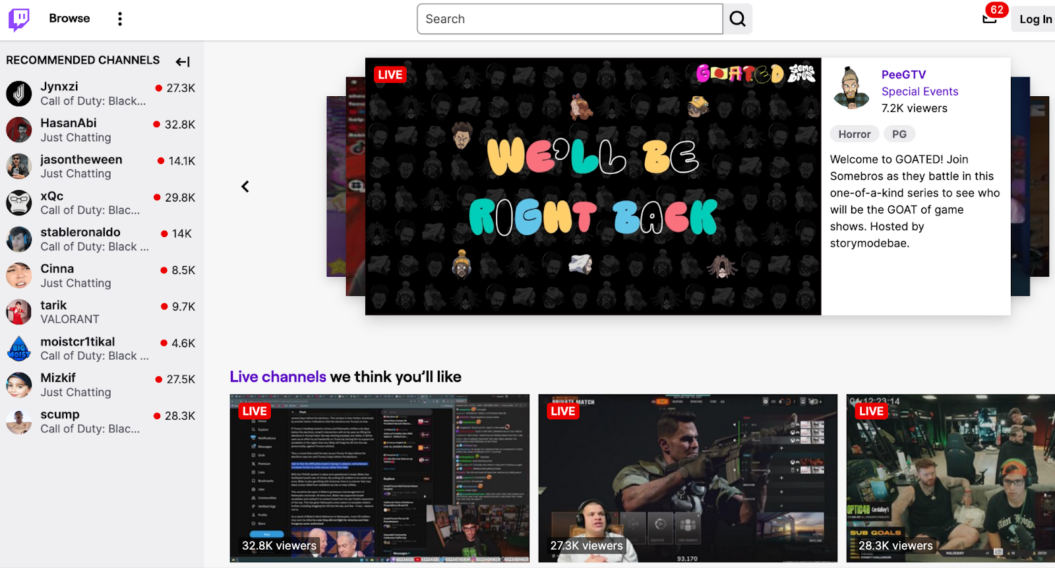
While Twitch used to be primarily a streaming service for gaming and gaming-related creators, it’s blown up into a huge social platform for live streaming all kinds of content, from just chatting on stream to game shows and beyond. This is one of the biggest differences between Twitch and YouTube; while you can upload video-on-demand content to Twitch, its main focus is live streaming.
This is a great option if building a community of people who want to hang out with you while you stream content is a high priority. The platform has a reputation for focusing on the individual and allowing fun personalities to shine.
Making money on Twitch
Subscriptions (or “subs”) are the main way to make money on Twitch. Creators can offer subscriptions at three tiers:
- Tier 1: $4.99/month (50-50 split with Twitch)
- Tier 2: $9.99/month (60-40 split with Twitch)
- Tier 3: $24.99/month (70-30 split with Twitch)
Each tier gets access to different benefits defined by the creator, which can include badges, exclusive content, subscriber chat, and ad-free viewing.
Bits are essentially donations from viewers, and you’ll earn 80% of $0.01 for each one.
Ad revenue is also possible, though it’s not a revenue focus like it is on YouTube.
Brand sponsorships are also an option, though you’ll need a significant following to start having these conversations.
Advantages of monetizing on Twitch
- Built around streaming
- Has a huge audience, especially since becoming a part of Amazon
- Emphasis on subscriptions can make revenue more predictable
Disadvantages of monetizing on Twitch
- Doesn’t support extensive on-demand options, so you’ll need to spend a lot of time streaming
- Lacks a wide variety of monetization options
- The top 0.13% of creators make about $900 per month
TikTok
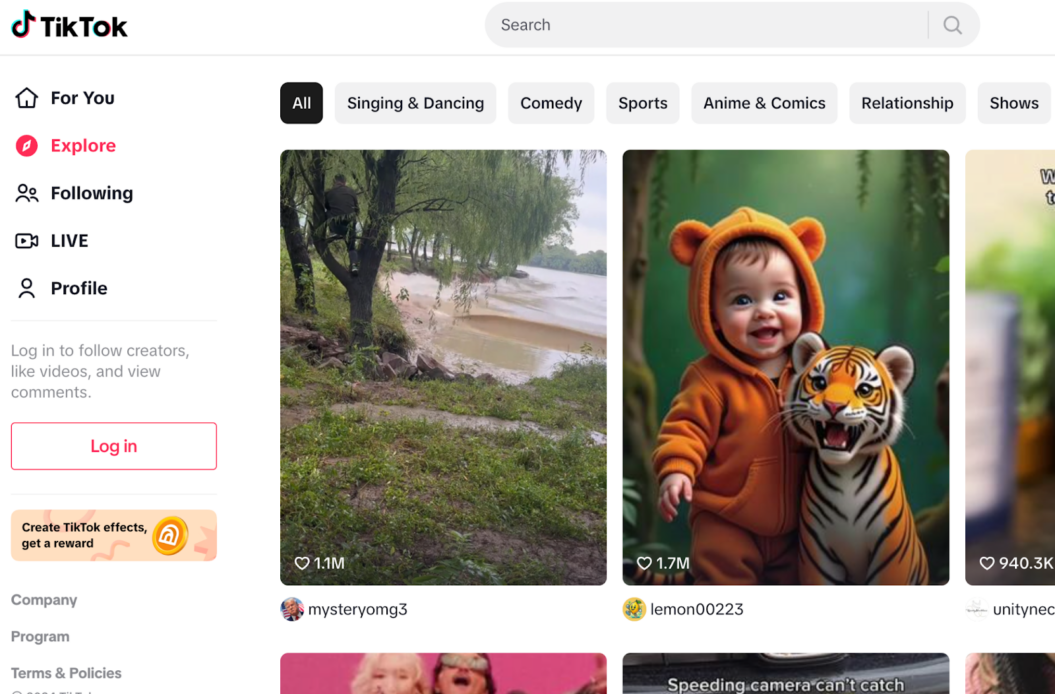
Like YouTube, TikTok is a social platform; however, TikTok is focused on short-form videos – the maximum length for content on the platform is 10 minutes, while the most successful videos tend to be in the range of 20 to 30 seconds (if you’ve been thinking about monetizing YouTube Shorts, this may be a great alternative).
TikTok is very popular with younger audiences, which could be beneficial to creators, depending on their niche. It’s also worth noting that TikTok faces scrutiny in the U.S. – its parent company, ByteDance, is a Chinese corporation, and there was talk of banning the app in the United States unless ByteDance sold the social platform. This discussion has calmed in late 2024, and this may not be an issue in the future, but it’s worth being aware of.
Making money on TikTok
The TikTok Creator Rewards Program pays between 2¢ and 4¢ per 1,000 video views to video creators who meet the following requirements:
- More than 100,000 followers.
- At least 3 videos posted in the last 28 days.
- Over the age of 18.
- More than 100k video likes in the last 28 days.
Sponsorships are much more lucrative, and can be organized through the TikTok Creator Marketplace, which connects creators and brands looking for promotion on TikTok (how much you earn depends largely on the size of your following, and can range from $100 to several thousand dollars if you have more than a million followers).
Series lets creators post up to 80 videos behind a paywall – viewers pay to get access to the entire series. You’ll need to meet minimum requirements to apply for this monetization method, including having 10,000 or more followers.
Advantages of monetizing on TikTok
- Fifth most popular social media platform with over 1.5 billion monthly active users
- Popular with younger users
- Great for building community with its emphasis on quick, fun content
Disadvantages of monetizing on TikTok
- Creator Rewards Program pays very little for views
- A Series is the only way to exert control over monetization
- May face legal challenges in the United States
Uscreen
If you’re looking for more control over your video monetization, a dedicated streaming platform will provide it. Uscreen lets you charge for video-on-demand, live streaming, rentals, and many other monetization options. You can also build your own website that includes video streaming, community chat, calendaring, and more.
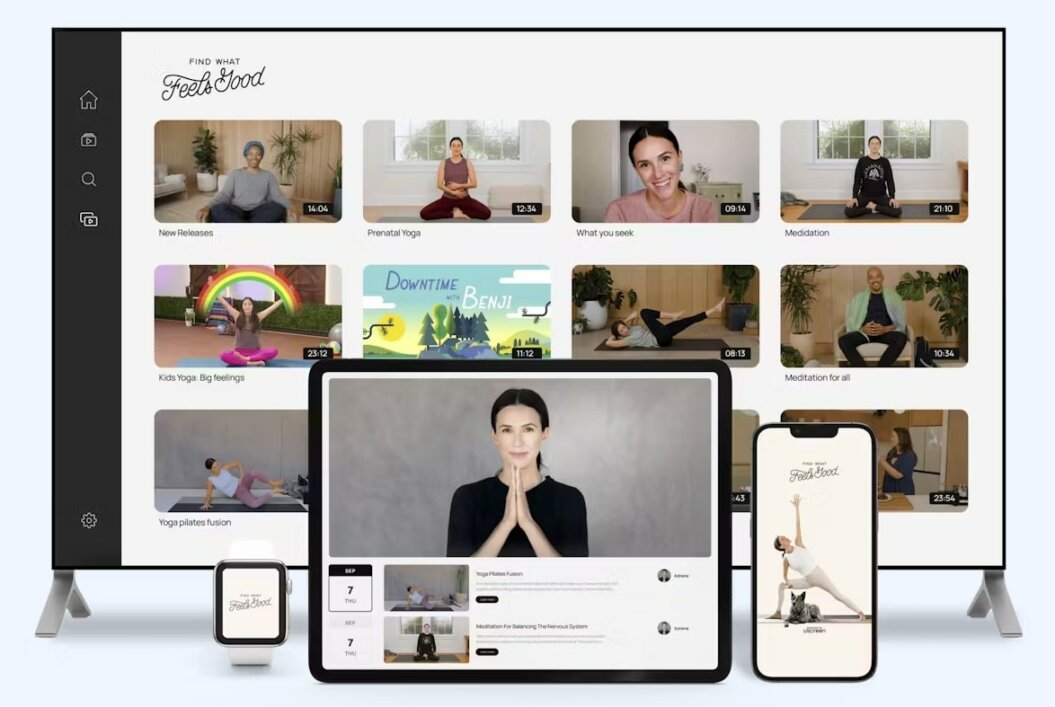
Having your own website (and an app, if you choose) that houses your community and videos is a great way to keep your audience engaged – they won’t get distracted by the millions of other videos on YouTube or TikTok. And providing a dedicated space for member interactions builds a sense of community, which is good for member retention.
Usreen is used by influencers and YouTubers, fitness content creators, coaches of all types, media businesses, and many other kinds of video creators, from filmmakers to homesteaders and beyond. Creators appreciate the control they get over monetization as well as very high earning potential (Prodigies pulls in over $40,000 per month, for example).
Making money on Uscreen
Memberships offer a recurring revenue stream for creators. You can offer multiple tiers of membership that give viewers access to different content, community features, and more. You get to decide what to charge.
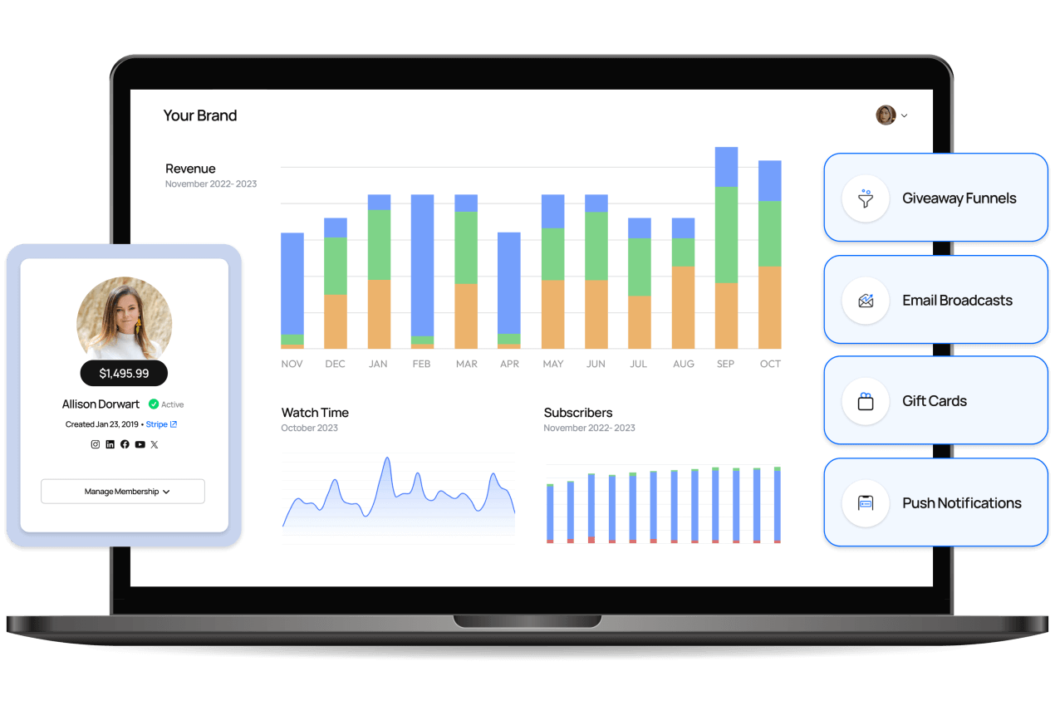
Video-on-demand lets viewers pay for single videos, letting you provide value without requiring a membership (it’s a great marketing opportunity).
Rentals allow viewers to purchase limited-time access to single pieces of content.
Bundles let you combine access to specific videos at a slight discount.
Live streams can be included in memberships or priced individually, as well as bundled.
It’s also worth noting that creators can combine these monetization methods for maximum earning potential. For example, RaceDayTV broadcasts events to subscribers, but also lets viewers purchase access to single events after the live stream has concluded:

Advantages of monetizing with Uscreen
- Creators get full control over how they monetize content
- Strong focus on fostering community and providing value for viewers
- Tools for building mobile and TV apps
Disadvantages of monetizing with Uscreen
- Monthly fees are higher than some other options (starts at $149 plus $1.99 per subscriber per month)
- May be difficult to transition an existing community from YouTube into a new space
- Limited design flexibility relying on templates for sites and apps
Patreon
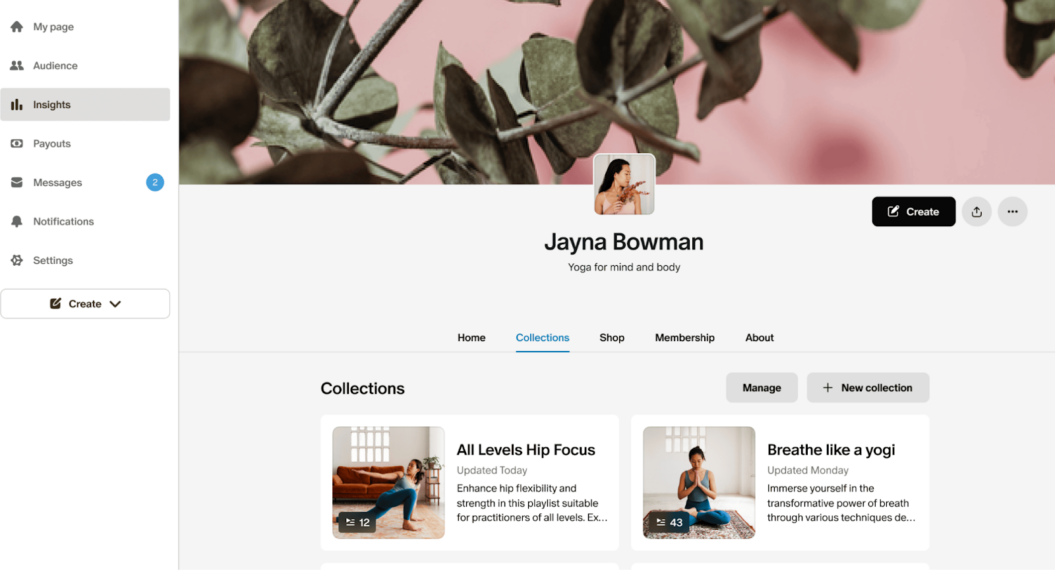
Used by all kinds of creators, Patreon is a straightforward way to charge membership fees for distributing content. That’s not limited to video content – writers, photographers, designers, game developers, and all kinds of other creators use Patreon to connect with subscribers, too.
Patreon has great brand recognition and trust, which is especially nice if you’re moving a less tech-savvy audience off of YouTube.
Making money on Patreon
Memberships are the primary way to earn on Patreon. Subscribers pay a monthly fee and receive exclusive content on a regular schedule.
Digital product sales can also be a source of earnings if you have things to sell that don’t need to be shipped (this could include exclusive videos or streaming events that you want to charge for).
Advantages of monetizing with Patreon
- Simple model: charge what you want for a membership and distribute content
- Digital product marketplace lets you sell access to videos or digital products
- Brand recognition and trust
Disadvantages of monetizing with Patreon
- Not built for video – it works, but you’ll miss out on categorization and presentation
- Very few options for monetization
- 8%–12% revenue sharing fees
Muvi
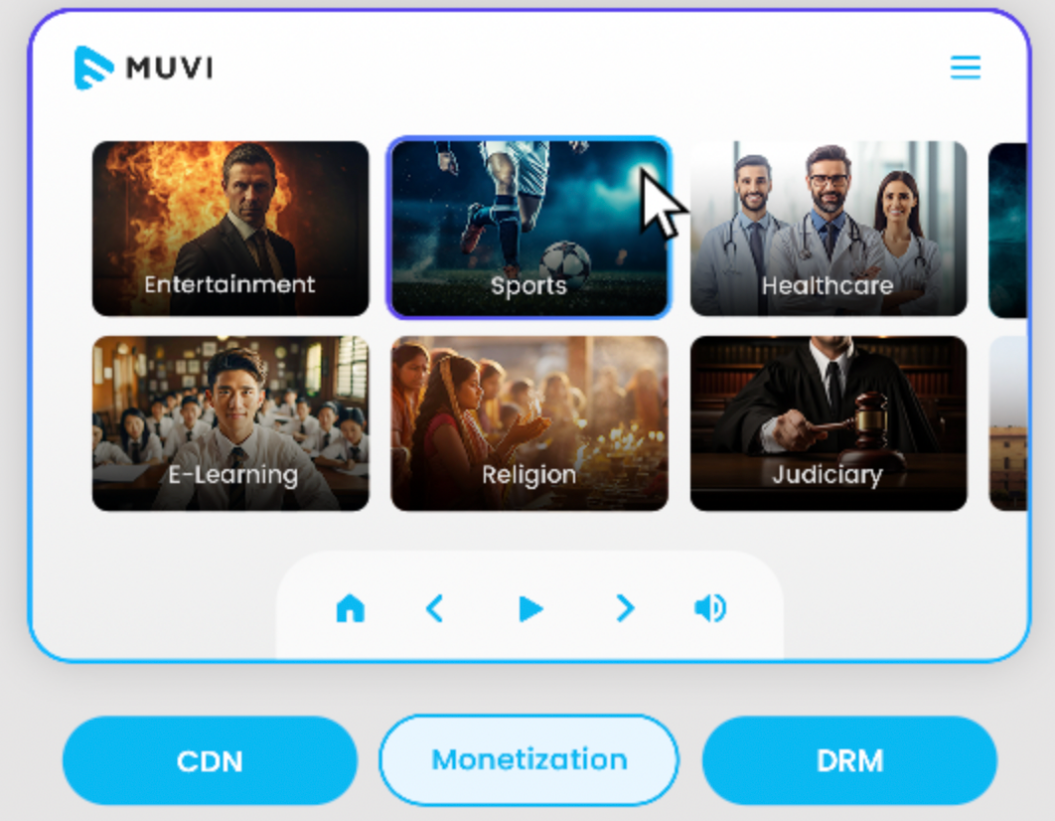
One of the highest-rated over-the-top (OTT) platforms, Muvi offers a lot of benefits for creators with significant followings and budgets. Because of the high cost to get started with Muvi, it may be best for organizations rather than individual creators.
If you can swing the cost, though, you’ll get a lot of support from Muvi – options like AI recommendation tools, dedicated servers, and digital rights management (DRM) will help you provide a lot of value to your audience.
Making money on Muvi
Subscription plans let you charge monthly for access to a particular set of your videos, much like memberships on YouTube or Uscreen.
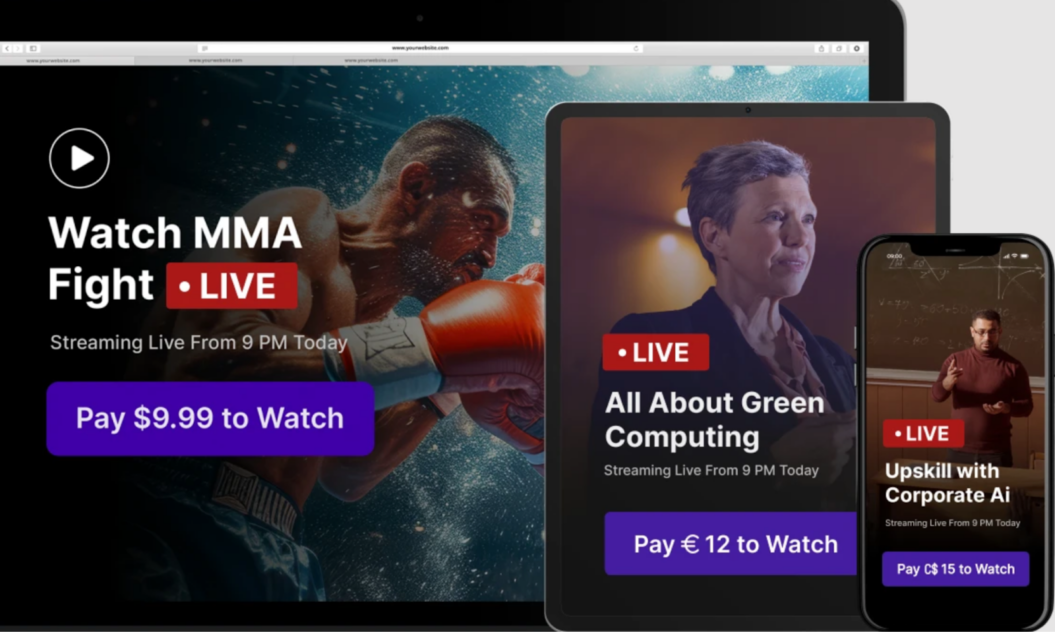
Ad revenue can be built into your video experience by integrating the ad server of your choice. You’ll need to understand how to integrate that ad server and its earning options, but if you’re advanced enough to know these things, you’ll appreciate the ability to integrate it into your video platform.
Ad-supported subscriptions combine subscription plans with ad revenue for a customized approach to monetization.
Pay-per-view lets you charge for access to individual videos, including live streams.
Audio ads let you monetize audio content on your platform by integrating audio ads wherever you’d like.
Muvi also offers advanced monetization features like the ability to charge your user’s phone bill for their subscription, monetization for content partners, and private subscription plans that aren’t available to the public.
Advantages of monetizing with Muvi
- Support for large organizations with complex technical needs
- Specific support for audio content
- Tools for building mobile, desktop, TV, and Xbox apps
Disadvantages of monetizing with Muvi
- Very expensive (starts at $399/month)
- Probably overkill for anyone currently using YouTube
- May require technical knowledge to fully take advantage of
Vimeo
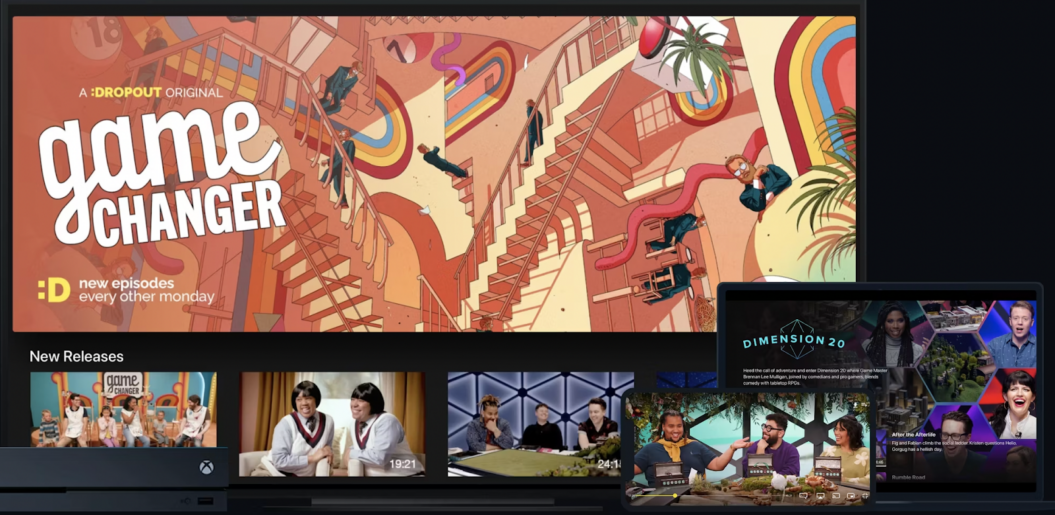
A name almost as popular as YouTube, Vimeo will be familiar to many users, and that can be an advantage in itself. This platform offers more features and control than YouTube, but doesn’t provide as large of an audience.
Vimeo is definitely a step up from YouTube when it comes to tools and monetization, but it lacks some of the notable features of other streaming platforms. If you’re ready to graduate from YouTube, you may already be ready to move on from Vimeo, too – but it’s hard to argue with an affordable option that surpasses YouTube’s features.
How to make money on Vimeo
Subscriptions give your subscribers access to a set of your videos, just like you’d expect. Charge what you want and distribute your videos to your viewers.
Live streams let you charge for access, and Vimeo has support for easily turning them into video-on-demand for continued earning.
On-demand options let you charge for access to individual pieces of content.
Advantages of monetizing with Vimeo
- Very affordable (even the free plan lets you sell subscriptions)
- More features than YouTube
- Includes some built-in marketing tools
Disadvantages of monetizing with Vimeo
- Little focus on community
- Can’t host live events until you get to the Advanced plan ($65/month)
- No live chat below the Advanced plan
Choosing the best YouTube alternative for monetization
There are many platforms you can use to monetize your videos outside of YouTube. The six above are some of the best. So how do you choose which is right for you?
1. Assess your needs
Assessing your needs is the first step in figuring out which YouTube alternative is best for you. Think about what you want from your monetization platform. For example, are you looking for:
- Support for community, like live chat and user profiles?
- Built-in marketing tools that help you build your following?
- Advanced monetization options like rentals, bundles, and hidden subscription plans?
- Automated upselling tools?
- Low monthly fees?
Spend some time thinking about the ideal features your platform will provide. What do you envision as the best way to make money from your video content?
Make a prioritized list of five to six features that are important to you.
2. Establish your budget
It doesn’t cost anything to get started on YouTube or TikTok, but as we saw above, paying a monthly fee for advanced features gives you significantly more options for monetizing your content.
Once you have an idea of the features that are important to you, you’ll probably know if you need to pay for a streaming platform or if you can use a free social one. If you’re serious about monetization, though, a paid streaming platform will give you features that give you more control over how you make money as well as tools that make for a better user experience, increased retention, and marketing tools for growth.
Here are some of the basics on Uscreen’s pricing, for example:
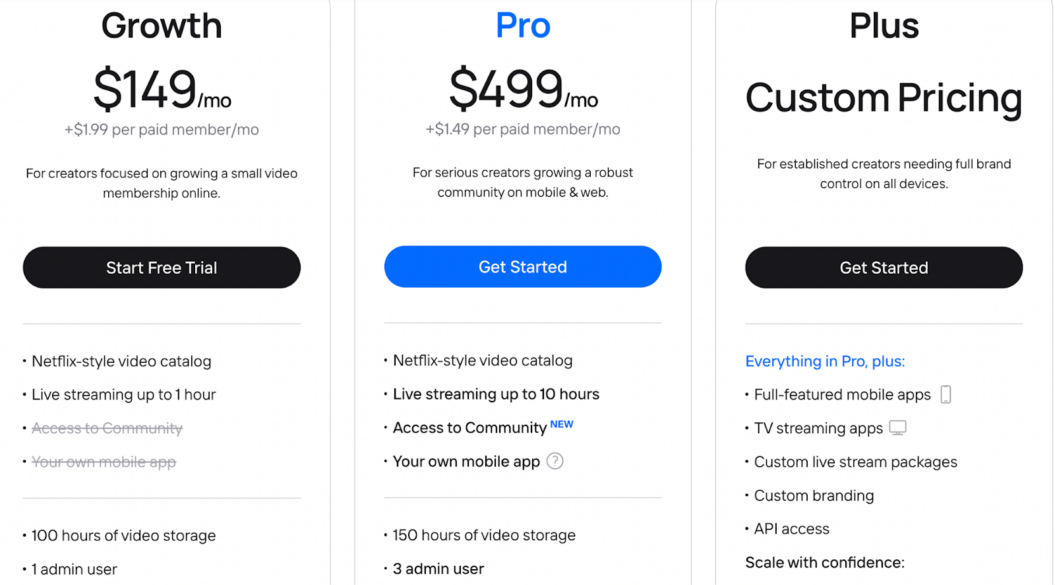
All that being said, what’s your budget? If $200/month with lots of useful features is reasonable, Uscreen is a great high-value option. If you can swing $500 or more and you have very advanced ideal features, Muvi might be worth a look. If you have no budget at all and you’re just getting started, Vimeo or Twitch might be better for you, depending on what you’re looking to do.
3. Make a shortlist of platforms and start comparing
With a prioritized list of features that you want and a budget, you can start choosing some platforms to look into in more detail. Start with a list of three to five platforms, then start comparing them.
Start on G2 or Capterra to look at positive and negative reviews to get an idea of what other creators like and dislike about each platform.
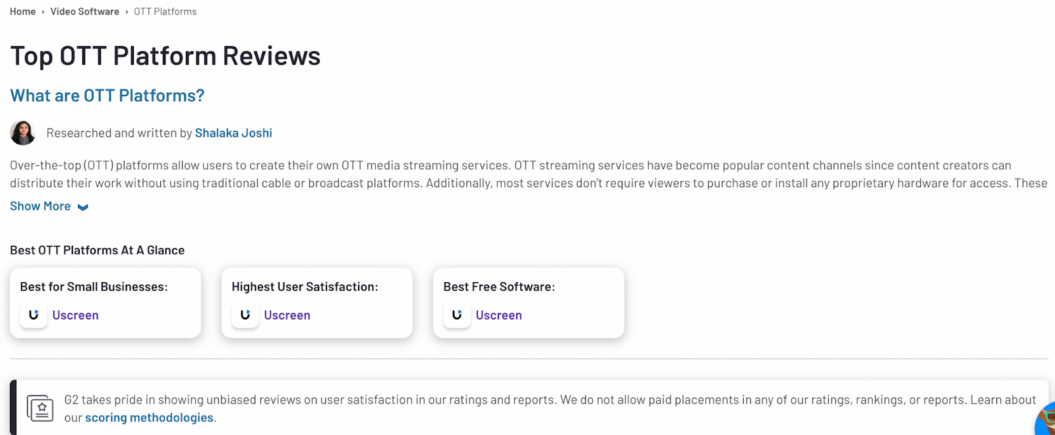
Then go to each platform’s website and compare your high-priority features. If you’re looking for community features, ask questions like this:
- How many chat spaces can you create?
- Can you customize the look and feel of your community space?
- What about offer community challenges?
- Is there automated community onboarding?
- Can you create push notifications from a mobile app?
Compare each of your high-priority features between those platforms (the pricing pages are often a good place to start, as they break down the features you’ll have available to you in great detail).
4. Dig into pricing details
You established your budget, and you’ve selected a few platforms that are within it. But pricing for streaming platforms can be surprisingly complicated. So it’s time to get into the details.
Here are a few things to watch out for:
- Per-subscriber charges
- Bandwidth caps and overage charges
- Storage limits and extra charges
- Extra charges for integrations
- Transaction fees
- Cost for building an app, if applicable
Once you have an idea of what you’ll actually be paying, based on your anticipated numbers, you may be able to eliminate a service or two as being out of your budget.
5. Make a final decision
You know what you need, what you can afford, which services provide the features you’re looking for, and how much they really cost.
Now all that’s left to do is make an informed decision you can be confident in and start monetizing in a way that works for you!
Build, launch and manage your membership, all in one place.






